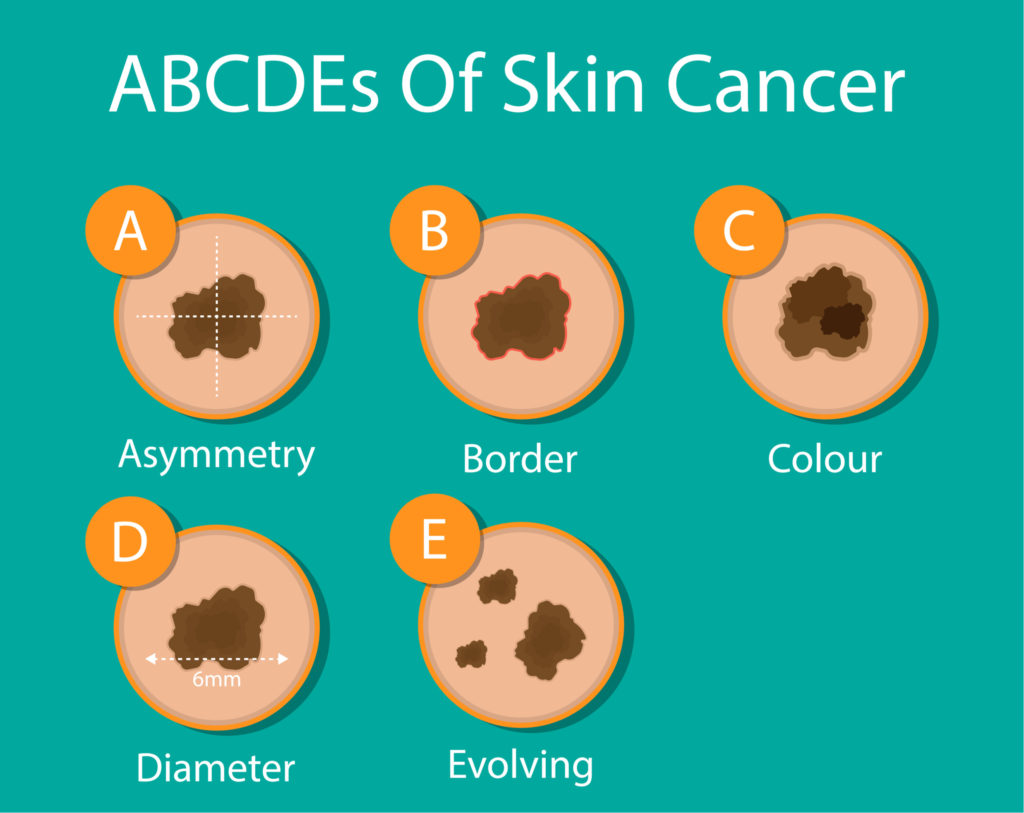With more time being spent in the sun during summer months, it is very important to check your body for abnormal moles and other irregularities on your skin because early detection is the best prevention against skin cancer. Dermatologist Dr. Dendy Engelman recommends using the “ABCDE” rule when performing a self-check:
Asymmetry
Most melanomas are asymmetrical. If you draw a line through the middle of the lesion, the two halves won’t match, so it looks different from a round and symmetrical common mole.
Border
A cancerous mole’s borders tend to be uneven and may have scalloped or notched edges, while common moles tend to have smoother, more even borders.
Color
Multiple colors are a major warning sign. The Skin Cancer Foundation says, “While benign moles are usually a single shade of brown, a melanoma may have different shades of brown, tan or black. As it grows, the colors red, white or blue may also appear.”
Diameter
It’s usually ideal to detect a melanoma when it is small, but it’s a warning sign if a lesion is the size of a pencil eraser (about 6 mm, or ¼ inch in diameter) or larger. It is important to look for any lesion, no matter what size, that is darker than others. Rare, amelanotic melanomas are colorless.
Evolving
If you notice any change in size, shape, color or elevation of a spot on your skin, or any new symptom in it, such as bleeding, itching or crusting, may be a warning sign of melanoma.
The Skin Cancer Foundation recommends, “If you notice these warning signs, or anything NEW, CHANGING or UNUSUAL on your skin see a dermatologist promptly.”

Sources:



